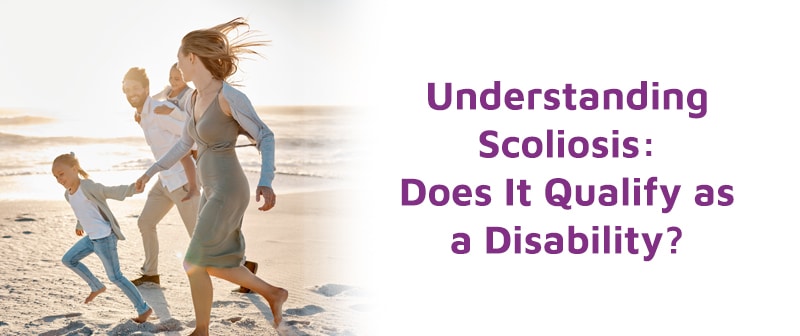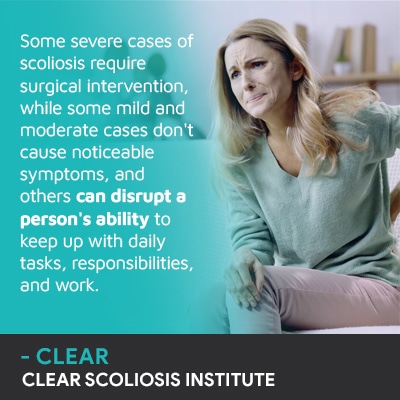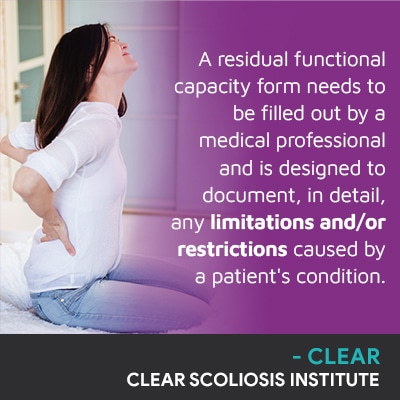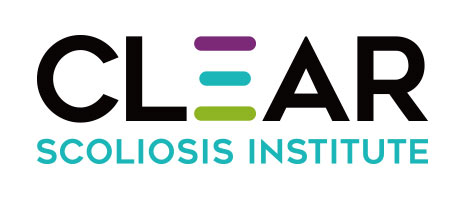
There's a lot to understand about scoliosis, including its progressive nature; where a person's condition is at the time of diagnosis doesn't mean that's necessarily where it will stay. Disability benefits for scoliosis will depend on a number of factors.
People diagnosed with scoliosis often ask if it will affect their ability to work. Because no two cases are the same, disability benefits for scoliosis, and whether one will qualify for disability, will depend on a number of factors including condition type, severity, and the patient's occupation.
In order to receive disability benefits for scoliosis, a disability claim has to be filed, so let's start with the type of scoliosis effects capable of disrupting a person's ability to work.
Being diagnosed with scoliosis means a spinal condition has developed that causes an unnatural sideways curvature of the spine, with rotation, and when this happens, the spine's overall health, strength, and function can be disrupted.
Scoliosis is also a progressive condition, meaning its nature is to get worse over time, and this means its effects can become more noticeable and disruptive.
So a person can be diagnosed with mild scoliosis, not notice any effects initially, continue working and living life as normal, but over time, and particularly with growth and age-related spinal degeneration, progression can occur and new symptoms can develop.
For those with progressive scoliosis, multiple disability claims might need to be filed as the condition's effects change over time.
As scoliosis progresses, the size of the unhealthy spinal curve is going to increase, and this can make the spine more rigid and less responsive to treatment, and as the condition's effects also increase with progression, they only become harder to reverse the longer they're established: why being proactive with treatment can be so beneficial.
Scoliosis introduces a lot of uneven forces to the body so postural changes and pain are common, along with disruptions to movement: all things capable of affecting a person's ability to work, but of course, that also depends on symptom severity and the occupation in question.

Scoliosis becomes compressive when growth has stopped, so for adults who have reached skeletal maturity, the condition's uneven pressure on the spine and its surroundings can cause varying levels of pain.
For children, the earliest signs of scoliosis often involve asymmetries in the body, and scoliosis is diagnosed through a physical examination and X-ray results.
As scoliosis develops, it can disrupt the body's overall symmetry, and common postural changes can include:
Postural changes are driven by the condition's uneven forces, and the body's shifting center of gravity can further disrupt movement, so if a person's occupation involves regular and repetitive symmetrical movement, this can be affected.
Scoliosis also weakens the spine, making it more vulnerable to injury, and when it's compressive, scoliosis pain can involve the muscles, back, and radiating pain due to nerve compression.
Pain can be disruptive, as can neurological symptoms from nerve root compression and/or related neuropathy.
Scoliosis ranges widely in severity, so mild scoliosis symptoms can be subtle and not always disruptive to daily life and a person's ability to work, but severe scoliosis and very severe cases can come with additional symptoms and complications.
Some severe cases of scoliosis require surgical intervention, while some mild and moderate cases don't cause noticeable symptoms, and others can disrupt a person's ability to keep up with daily tasks, responsibilities, and work.
If severe enough, scoliosis can be considered a disability by the Social Security Administration (SSA), and eligibility is determined based on a number of medical requirements.
The Social Security Administration uses a medical guide, known as the Blue Book, to classify conditions.
While there is not a specific listing for scoliosis, it falls under the umbrella of musculoskeletal disorders, and eligibility depends on one of the following requirements being met:
Nerve Compression that's evident through limited spinal motion, motor loss, sensory reflex loss, and radiating pain throughout the body; in adults, nerve pain is the main symptom that brings them in for a diagnosis and treatment, and most often, this involves pain radiating into the arms/hands, legs/feet.
Spinal membrane swelling can cause severe pain that can make it necessary to change positions frequently.
Spinal cord inflammation caused by lumbar spinal stenosis. The spinal cord is the bundle of spinal nerves that passes through the spinal canal, and lumbar spinal stenosis involves a loss of space inside the spine causing nerve compression, inflammation, and/or impingement.
Spinal cord stenosis can cause pain and disruptions to movement and gait. Activities that involve endurance will be difficult to maintain.
There is another option for support if the aforementioned requirements aren't met; patients can apply for a medical vocational allowance provided by the SSA if other requirements are met proving an inability to work.
Eligibility for a medical vocational allowance is determined by what's known as a residual functional capacity form (RFC).
Social security disability benefits help people cover the costs of basic living expenses and maintain a quality of life.
In order to qualify for disability benefits, certain parameters have to be met that can show a person's ability to work is affected, and pay is determined accordingly.

Although scoliosis is a spinal condition, its effects can be widespread throughout the body, and as such a highly-variable condition, the specifics of each condition have to be documented including condition type, severity, progressive rate, and experienced symptoms.
Specific areas of focus that directly impact a person's ability to work can include:
The purpose of the RFC is to provide a complete and comprehensive assessment of a patient's health, with a direct focus on how the scoliosis is affecting the ability to work.
Social security disability payments will be calculated accordingly and could change if a patient's condition changes over time.
With progressive conditions like scoliosis, regular assessment is important not only to document the condition's effects, but also how the condition is changing over time; progression makes the condition more severe, along with its effects, and this can also change a patient's ability to work over time.
There was a time when a scoliosis diagnosis wasn't fully understood. We didn't understand the place of exercise in life and treatment, and we didn't fully understand all the condition's potential effects.
With current estimates at close to seven million people living with scoliosis in the United States alone, the condition is highly prevalent and awareness is important.
While most cases of scoliosis don't have a known cause (idiopathic scoliosis), there are atypical condition types like neuromuscular scoliosis and degenerative scoliosis that tend to be more severe and are even more likely to disrupt a person's ability to work.
The more severe a condition is, the more noticeable its effects are likely to be, and if scoliosis is left untreated, it can cause complications such as breathing impairment that can further affect a person's ability to work.
Each case is unique, but common medical requirements for scoliosis to be considered a disability and eligible for disability benefits include nerve compression, spinal cord inflammation, spinal membrane swelling, chronic pain, and disruptions to movement.
A residual functional capacity form will be filled out by a medical professional as medical evidence for how disruptive a patient's scoliosis is, how long it has been present, and how long it will continue to be, along with whether it's considered progressive and likely to get worse over time.
I want to be clear that scoliosis isn't always disruptive to daily life, particularly for patients whose conditions are diagnosed and treated early.
Here at the CLEAR Scoliosis Institute, scoliosis patients are treated proactively with a non-surgical treatment approach, and many patients experience treatment success and continue to thrive; for those whose conditions are severe and/or debilitating, however, there is assistance available that can include disability benefits for eligible applicants.

CLEAR provides a unique and innovative way of understanding scoliosis. Sign up to receive facts and information you won’t find anywhere else.
